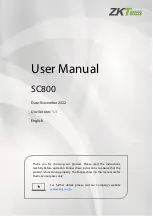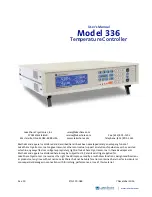
SUNLOVER HEATING
WARRANTY – SL6 ELITE
This product is covered by a limited 2 year warranty against component failure or faulty
workmanship from the date of installation.
Temperature sensors are covered by a limited 12 month warranty.
A faulty unit should be returned in the first instance to the dealer from which the unit was
purchased.
Damage to the unit due to misuse, power surges, lightning strikes or installation that is
not in accordance with the manufacturer’s instruction may void the warranty.
If the power cord is damaged, do not use the controller; return the unit to the
supplier for repair
Warranty does not cover travel or freight / postage costs to or from installation site.
Return to supplier for repair
Customer Record
. (To be retained by the customer)
Dealer/Installer Name………………………………………………
Model Number………………………
Serial Number……………………….
Date Installed………………………..
…………………………………………………………………………
For service assistance phone SUNLOVER HEATING
VIC
03 9887 2131
NSW
02 9838 0000
QLD
07 5597 7360
Factory 6
62 Parkhurst Drive
7-9 Activity Crescent
Knoxfield VIC 3180
Molendinar 4214
Victoria Australia
Queensland Australia
Unit 2
20-22 Foundry Road,
Seven Hills 2147
New South Wales Australia
www.sunloversolar.com.au
DESCRIPTION:
The SL6 Elite is a premium automatic solar controller with temperature adjustment,
manual, winter and tropical mode features. All configurable items are retained after a
power outage for up to 14 days.
CONTROLLER INSTALLATION:
Find a suitable location to mount the control box. The controller must be installed out of
direct weather and no closer than 3 meters from the water’s edge. Lift up the two
mounting tabs and use two appropriate screws to mount the control box to the wall,
keeping in mind that the power cable is 1.8m long and should be plugged directly into a
general power outlet, not into an extension lead.
The solar pump plugs into the 240Vac socket marked as PUMP.
The pool sensor must be fitted into the suction line of the pump, as close to the pool as
practical, preferably in a position out of direct sunlight. It is recommended that a 14.5mm
hole be drilled in the PVC pipe, this can be carried out using a Dontek PD01 grinding drill
or a small pilot hole can be drilled and a 14.0mm drill-bit used spinning in a counter
clockwise direction to minimise the chance of shattering pipe. Insert the grommet into the
pipe and gently push in the black sensor barb. The green sensor plug is to be fitted to the
plug socket marked POOL.
DO NOT cable-tie or tape sensor wires to mains power, in some cases there is some
benefit to cable tie 30cm of wire from the sensor to the pipe and insulate this section
(some ambient differences can travel up the tinned copper wire and affect the sensor
reading).
Roof sensors must be fitted into a small piece of solar collector or equivalent and attached
to the roof. The best location is within arm’s length of the gutters edge of the house or
shed as long as the sensor end is not shaded and is on a roof of similar aspect of the
main collector. It
must not
be fitted on top of the solar collector or fitted to high points
on the roof like ridge capping as false readings will be detected.
Keep in mind that it is of the utmost importance to keep the roof sensor as short as
possible as this will assist in the longevity of the sensor and controller in the event of
electrical storm activity and power surges. Sensor cables
must not be run parallel to
power cables
and run lengths should be less than 50m if possible. Cable ties should be
used to fasten the sensor cable to the cold water inlet pipe making sure that the ties are
approximately 10mm from PVC fittings. Cable ties should be tightened only firm, over
tightening can cause breaks in the outer PVC if not careful. If the cable is to be run under
ground a conduit must be used to protect the wire and there is to be no cable joins
within, conduit ends
must
be sealed to prevent water ingress.
Any excess cable should
be removed and re-fitted ensuring that the wire ends are tinned with solder.
The
sensor plug is to be fitted to the right hand socket marked ROOF.




















